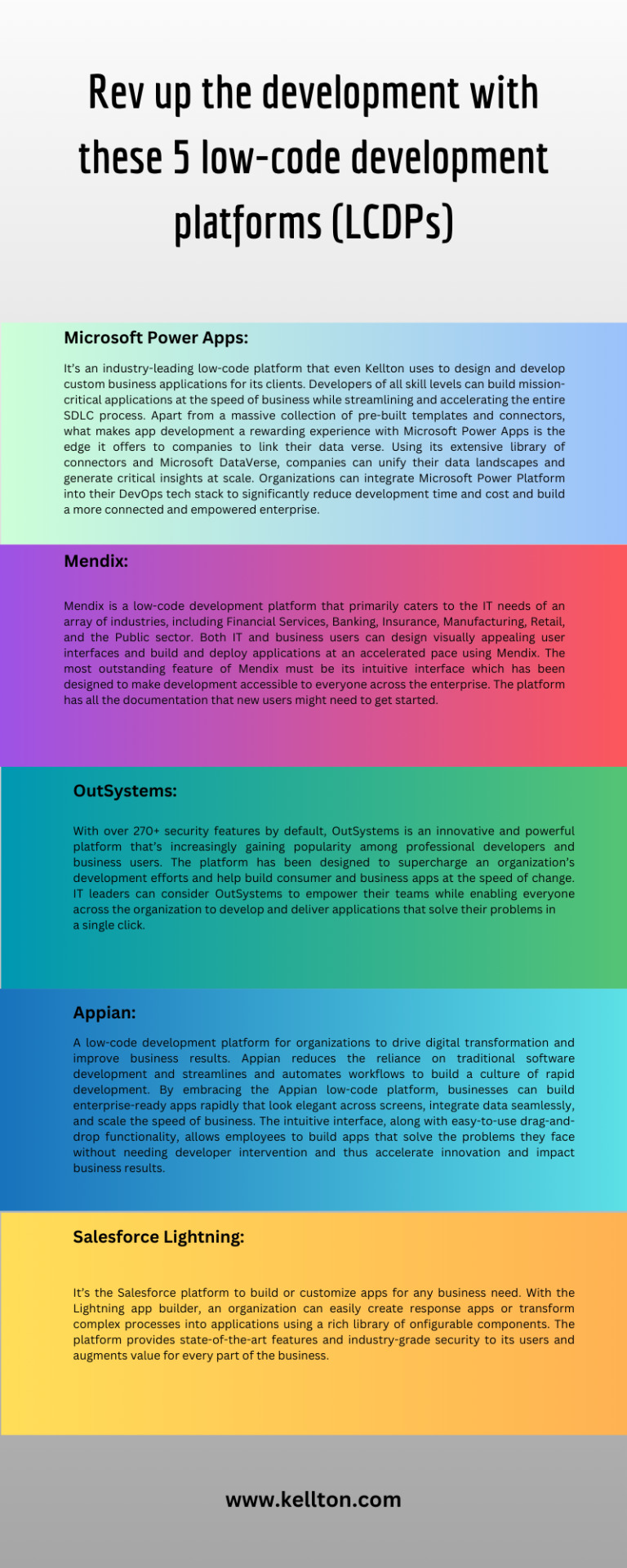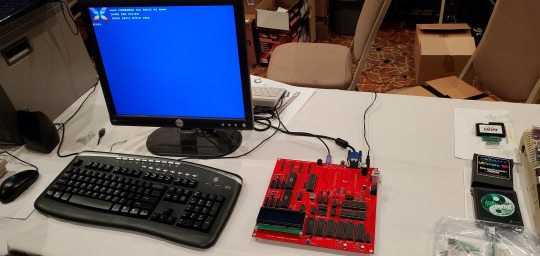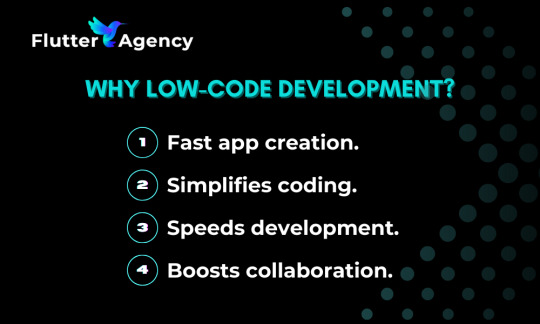#Rapid Software Development
Explore tagged Tumblr posts
Text

Rapid Application Development Service You Need
Accelerate your projects with Rapid Application Development. Our Rapid Application Development Service brings speed and quality to your software journey.
#Rapid Application Development#Rapid Application Development Service#Application Development Services#Rapid Software Development
0 notes
Text
Cryptocurrency exchange development company
Metaboxfy, India's leading cryptocurrency exchange development company, empowers you to create your own cryptocurrency exchange software. With Metaboxfy, you can establish a platform that functions like any other exchange, but with the added advantage of a finely tuned algorithm that ensures precise and rapid transaction processing. Trust the expertise of Metaboxfy, the premier Cryptocurrency exchange development company in India.
Check It Out!
#Cryptocurrency Exchange Development#Metaboxfy#Cryptocurrency Exchange Software#Rapid Transaction Processing#Cryptocurrency Development Company#Blockchain Technology#Crypto Trading Platform#Financial Technology
1 note
·
View note
Text
Low Code Development
Low-code development is a software development approach that enables users to create applications with minimal hand-coding, primarily through visual interfaces and pre-built components. This methodology accelerates application delivery and empowers both professional developers and business users—often referred to as "citizen developers"—to participate in the development process. For more information please visit us : https://www.gohashinclude.com/lowcode-development
#low code development#custome love code soltuion#rapid application development#low code software development
0 notes
Text
Why Adaptive Software Development is the Future of Agile
Discover why Adaptive Software Development (ASD) is redefining Agile with flexibility, collaboration, and continuous improvement for complex projects.
Agile methodologies have become the cornerstone of modern software development, offering a framework that prioritizes flexibility, rapid delivery, and close collaboration between developers and stakeholders. Among the agile frameworks, Adaptive Software Development (ASD) has emerged as a robust approach designed to handle the complexities of evolving projects, making it increasingly popular in��
#Adaptive Software Development#agile#Agile Framework#Agile Methodology#ASD#autism#Future Of Agile#mental-health#Project Management#Rapid Application Development#Software Development#Tech Innovation
0 notes
Text
10x Faster App Development - Rapid Prototyping with Low-Code
Achieve 10x faster app development with low-code platforms. Streamline rapid prototyping, reduce complexity, and bring your product to market more efficiently.
0 notes
Text
youtube
NXP: FRDM Development Boards for Rapid Prototyping
https://www.futureelectronics.com/resources/featured-products/nxp-mcx-n-mcx-a-microcontrollers . FRDM development boards are a low-cost, scalable hardware platform supported by the MCUXpresso Developer Experience. Designed to promote creative freedom while developing for various end applications. https://youtu.be/YpHF9rL0oRQ
#Nxp#frdm#development board#rapid prototyping#software engineering#microcontroller firmware#microcontroller#FRDM#development boards#How to#future electronics#Youtube
1 note
·
View note
Text
youtube
NXP: FRDM Development Boards for Rapid Prototyping
https://www.futureelectronics.com/resources/featured-products/nxp-mcx-n-mcx-a-microcontrollers . FRDM development boards are a low-cost, scalable hardware platform supported by the MCUXpresso Developer Experience. Designed to promote creative freedom while developing for various end applications. https://youtu.be/YpHF9rL0oRQ
#Nxp#frdm#development board#rapid prototyping#software engineering#microcontroller firmware#microcontroller#FRDM#development boards#How to#future electronics#Youtube
0 notes
Text

Rev up the development with these 5 low-code development platforms (LCDPs)
0 notes
Text
The Advantages of Rapid Application Development for Businesses
Rapid Application Development (RAD) has emerged as a game-changing approach for businesses seeking to streamline their processes and deliver results swiftly. We will delve into the distinct advantages that RAD offers to businesses of all sizes, shedding light on its impact and potential for transforming the traditional landscape of application development.
Enhanced Time-to-Market
Traditional application development methods often entail prolonged development cycles, leading to delayed product launches and missed business opportunities. RAD, on the other hand, accelerates the entire development process, enabling businesses to roll out new applications and updates in record time. This swift time-to-market advantage ensures that businesses stay ahead of the competition and cater to the dynamic needs of their target audience.
Flexibility and Adaptability
One of the key advantages of Rapid Application Development is its inherent flexibility. By fostering a collaborative and iterative approach to development, RAD empowers businesses to swiftly adapt to evolving market trends and customer feedback. This agility enables organizations to make real-time adjustments to their applications, ensuring that they remain relevant and responsive to the ever-changing business environment.
Cost Efficiency
RAD minimizes the resource-intensive nature of traditional development methodologies by emphasizing rapid prototyping and iterative feedback loops. This not only reduces the overall development costs but also allows businesses to allocate their resources more efficiently. The cost-efficient nature of RAD makes it an attractive option for businesses looking to maximize their ROI while maintaining a competitive edge in the market.
Enhanced Communication and Collaboration
The collaborative nature of RAD promotes seamless communication among cross-functional teams, fostering a shared understanding of project goals and requirements. This open exchange of ideas and feedback cultivates a cohesive working environment, where stakeholders are actively involved in the development process. By enhancing collaboration, RAD ensures that the end product aligns with the business objectives and user expectations.
Increased Customer Satisfaction
By enabling rapid iterations and quick deployment of updates, RAD empowers businesses to address customer needs and preferences in a timely manner. This proactive approach to development translates into heightened customer satisfaction, as businesses can swiftly incorporate user feedback and deliver tailored solutions. As a result, businesses can forge stronger customer relationships and secure a loyal customer base.
Conclusion
In conclusion, Rapid Application Development presents a myriad of advantages for businesses, ranging from accelerated time-to-market and enhanced flexibility to cost efficiency and improved customer satisfaction. By embracing RAD, businesses can revolutionize their development processes, driving innovation and staying ahead in today’s fast-paced business landscape. Embracing the principles of RAD can pave the way for sustained growth and competitiveness in an increasingly dynamic market environment. Visit more information for your website https://geeconglobal.com/process/rapid-application-development/
#Rapid Application Development#Agile Software Development Methodology#mobile app development#application development
0 notes
Text
Noosciocircus agent backgrounds, former jobs at C&A, assigned roles, and current internal status.
Kinger
Former professor — Studied child psychology and computer science, moved into neobotanics via germination theory and seedlet development.
Seedlet trainer — Socialized and educated newly germinated seedlets to suit their future assignments. I.e. worked alongside a small team to serve as seedlets’ social parents, K-12 instructors, and upper-education mentors in rapid succession (about a year).
Intermediary — Inserted to assist cooperation and understanding of Caine.
Partially mentally mulekicked — Lives in state of forgetfulness after abstraction of spouse, is prone to reliving past from prior to event.
Ragatha
Former EMT — Worked in a rural community.
Semiohazard medic — Underwent training to treat and assess mulekick victims and to administer care in the presence of semiohazards.
Nootic health supervisor— Inserted to provide nootic endurance training, treat psychological mulekick, and maintain morale.
Obsessive-compulsive — Receives new agents and struggles to maintain morale among team and herself due to low trust in her honesty.
Jax
Former programmer — Gained experience when acquired out of university by a large software company.
Scioner — Developed virtual interfaces for seedlets to operate machinery with.
Circus surveyor — Inserted to assess and map nature of circus simulation, potentially finding avenues of escape.
Anomic — Detached from morals and social stake. Uncooperative and gleefully combative.
Gangle
Former navy sailor — Performed clerical work as a yeoman, served in one of the first semiotically-armed submarines.
Personnel manager — Recordkept C&A researcher employments and managed mess hall.
Task coordinator — Inserted to organize team effort towards escape.
Reclused — Abandoned task and lives in quiet, depressive state.
Zooble
No formal background — Onboarded out of secondary school for certification by C&A as part of a youth outreach initiative.
Mule trainer — Physically handled mules, living semiohazard conveyors for tactical use.
Semiohazard specialist — Inserted to identify, evaluate, and attempt to disarm semiotic tripwires.
Debilitated and self-isolating — Suffers chronic vertigo from randomly pulled avatar. Struggles to participate in adventures at risk of episode.
Pomni
Former accountant — Worked for a chemical research firm before completing her accreditation to become a biochemist.
Collochemist — Performed mesh checkups and oversaw industrial hormone synthesis.
Field researcher — Inserted to collect data from fellows and organize reports for indeterminate recovery. Versed in scientific conduct.
In shock — Currently acclimating to new condition. Fresh and overwhelming preoccupation with escape.
Caine
Neglected — Due to project deadline tightening, Caine’s socialization was expedited in favor of lessons pertinent to his practical purpose. Emerged a well-meaning but awkward and insecure individual unprepared for noosciocircus entrapment.
Prototype — Germinated as an experimental mustard, or semiotic filter seedlet, capable of subconsciously assembling semiohazards and detonating them in controlled conditions.
Nooscioarchitect — Constructs spaces and nonsophont AI for the agents to occupy and interact with using his asset library and computation power. Organizes adventures to mentally stimulate the agents, unknowingly lacing them with hazards.
Helpless — After semiohazard overexposure, an agent’s attachment to their avatar dissolves and their blackroom exposes, a process called abstraction. These open holes in the noosciocircus simulation spill potentially hazardous memories and emotion from the abstracted agent’s mind. Caine stores them in the cellar, a stimulus-free and infoproofed zone that calms the abstracted and nullifies emitted hazards. He genuinely cares about the inserted, but after only being able to do damage control for a continually deteriorating situation, the weight of his failure is beginning to weigh on him in a way he did not get to learn how to express.
#the amazing digital circus#noosciocircus#char speaks#digital circus#tadc Kinger#tadc Ragatha#tadc Jax#tadc gangle#tadc zooble#tadc Pomni#tadc caine#bad ending#sophont ai
231 notes
·
View notes
Text
Even though I know it’s all intentional, I truly hate how we’ve become forced to normalize AI. I do think that the manufacturing of Artificial Intelligence was not done with malicious intent and has the capabilities of actually doing good, but time and time again ai is being used in literally everything for the worst reasons and getting its getting harder to escape.
From AI being used to scrape people’s hard work all over the internet, to giving predators and abusers more power in fabricating porn of strangers, to being used to strengthen racial bias in surveillance technology and aid in the development of weapons of war and mass destruction against marginalized groups of people…it’s just too fucking much. It’s so exhausting wanting to live in a world where we just didn’t need or have any of this shit, and it wasn’t like this a few years ago either. But now you can’t step outside without seeing something about AI, or a promotional ad for a new system to install. You can’t engage online anywhere without coming across AI software, and literally every single device in our present day implements AI to some degree, and it’s so fucking annoying.
I don’t want to keep worrying about the next idiot that’s spoon feeding my work into their AI system because they lack humanity and imagination. I don’t want to have to manually turn off AI detection on all of my apps and my phone just to use something. I shouldn’t have to be more mindful about the media I consume to distinguish whether or not it’s original or just more AI slop. I know it’s all intentional since we live in a hyper-capitalist world that cares more about profit margins & rapid productivity. But I really do vehemently hate how artificial intelligence has become such a fundamental aspect of our day to day lives when all it does is make the general population dumber and less capable of thinking for themselves.
Sincerely fuck AI. And if you use AI, I really do suggest you read up on how the data centers built to manage these AI systems suck up all of our resources for a simple prompt input. Who cares about answering a question in ChatGPT, entire communities don’t have water because they’re too busy cooling down the servers where people ask what 6 + 10 is cause their brains are so fried they can’t fire a single fucking neuron.

#fuck ai#and fuck everyone that uses it idc#it’s so hard being a creative and wanting original work when there’s ai slop everywhere#please just burn it all to the ground#enough of that bullshit you do not need a smart fridge with a touchscreen and ai built into it#its all just another form of state surveillance advertised as convenience it’s not normal#when you’re mindless sheep you’re easier to manipulate remember that#the way I work in the legal field and I hear my bosses talk about using AI to read case briefs is crazy#we live in the bad place
112 notes
·
View notes
Note
If the Commodore 64 is great, where is the Commodore 65?

It sits in the pile with the rest of history's pre-production computers that never made it. It's been awhile since I went on a Commodore 65 rant...
The successor to the C64 is the C128, arguably the pinnacle of 8-bit computers. It has 3 modes: native C128 mode with 2MHz 8502, backwards compatible C64 mode, and CP/M mode using a 4MHz Z80. Dual video output in 40-column mode with sprites plus a second output in 80-column mode. Feature-rich BASIC, built in ROM monitor, numpad, 128K of RAM, and of course a SID chip. For 1985, it was one of the last hurrahs of 8-bit computing that wasn't meant to be a budget/bargain bin option.

For the Amiga was taking center stage at Commodore -- the 16-bit age is here! And its initial market performance wasn't great, they were having a hard time selling its advanced capabilities. The Amiga platform took time to really build up momentum square in the face of the rising dominance of the IBM PC compatible. And the Amiga lost (don't tell the hardcore Amiga fanboys, they're still in denial).
However, before Commodore went bankrupt in '94, someone planned and designed another successor to the C64. It was supposed to be backwards compatible with C64, while also evolving on that lineage, moving to a CSG 4510 R3 at 3.54MHz (a fancy CMOS 6502 variant based on a subprocessor out of an Amiga serial port card). 128K of RAM (again) supposedly expandable to 1MB, 256X more colors, higher resolution, integrated 3½" floppy not unlike the 1581. Bitplane modes, DAT modes, Blitter modes -- all stuff that at one time was a big deal for rapid graphics operations, but nothing that an Amiga couldn't already do (if you're a C65 expert who isn't mad at me yet, feel free to correct me here).
The problem is that nobody wanted this.
Sure, Apple had released the IIgs in 1986, but that had both the backwards compatibility of an Apple II and a 16-bit 65C816 processor -- not some half-baked 6502 on gas station pills. Plus, by the time the C65 was in heavy development it was 1991. Way too late for the rapidly evolving landscape of the consumer computer market. It would be cancelled later that same year.
I realize that Commodore was also still selling the C64 well into 1994 when they closed up shop, but that was more of a desperation measure to keep cash flowing, even if it was way behind the curve by that point (remember, when the C64 was new it was a powerful, affordable machine for 1982). It was free money on an established product that was cheap to make, whereas the C65 would have been this new and expensive machine to produce and sell that would have been obsolete from the first day it hit store shelves. Never mind the dismal state of Commodore's marketing team post-Tramiel.

Internally, the guy working on the C65 was someone off in the corner who didn't work well with others while 3rd generation Amiga development was underway. The other engineers didn't have much faith in the idea.
The C65 has acquired a hype of "the machine that totally would have saved Commodore, guise!!!!1!11!!!111" -- saved nothing. If you want better what-if's from Commodore, you need to look to the C900 series UNIX machine, or the CLCD. Unlike those machines which only have a handful of surviving examples (like 3 or 4 CLCDs?), the C65 had several hundred, possibly as many as 2000 pre-production units made and sent out to software development houses. However many got out there, no software appears to have surfaced, and only a handful of complete examples of a C65 have entered the hands of collectors. Meaning if you have one, it's probably buggy and you have no software to run on it. Thus, what experience are you recapturing? Vaporware?
The myth of the C65 and what could have been persists nonetheless. I'm aware of 3 modern projects that have tried to take the throne from the Commodore 64, doing many things that sound similar to the Commodore 65.
The Foenix Retro Systems F256K:

The 8-Bit Guy's Commander X16

The MEGA65 (not my picture)

The last of which is an incredibly faithful open-source visual copy of the C65, where as the other projects are one-off's by dedicated individuals (and when referring to the X16, I don't mean David Murray as he's not the one doing the major design work).
I don't mean to belittle the effort people have put forth into such complicated projects, it's just not what I would have built. In 2019, I had the opportunity to meet the 8-Bit Guy and see the early X16 prototype. I didn't really see the appeal, and neither did David see the appeal of my homebrew, the Cactus.
Build your own computer, build a replica computer. I encourage you to build what you want, it can be a rewarding experience. Just remember that the C65 was probably never going to dig Commodore out of the financial hole they had dug for themselves.
262 notes
·
View notes
Text
Cryptocurrency exchange development company
Metaboxfy is a cryptocurrency exchange development company you may hire to help you create a trading app for cryptocurrencies. Since the algorithm that controls its trading is customized by Metabofy, a cryptocurrency exchange development company, for precision and speed, the exchange functions normally.
Check It Out!
#Cryptocurrency Exchange Development#Metaboxfy#Cryptocurrency Exchange Software#Rapid Transaction Processing#Cryptocurrency Development Company#Algorithmic Trading#Crypto Trading Platform
0 notes
Text
Reference saved on our archive (Daily updates! Thousands of Science, News, and other sources on covid!)
Could we develop a covid test breathalyzer? This is a study of one such device!
Abstract The SARS-CoV-2 coronavirus emerged in 2019 causing a COVID-19 pandemic that resulted in 7 million deaths out of 770 million reported cases over the next 4 years. The global health emergency called for unprecedented efforts to monitor and reduce the rate of infection, pushing the study of new diagnostic methods. In this paper, we introduce a cheap, fast, and non-invasive COVID-19 detection system, which exploits only exhaled breath. Specifically, provided an air sample, the mass spectra in the 10–351 mass-to-charge range are measured using an original micro and nano-sampling device coupled with a high-precision spectrometer; then, the raw spectra are processed by custom software algorithms; the clean and augmented data are eventually classified using state-of-the-art machine-learning algorithms. An uncontrolled clinical trial was conducted between 2021 and 2022 on 302 subjects who were concerned about being infected, either due to exhibiting symptoms or having recently recovered from illness. Despite the simplicity of use, our system showed a performance comparable to the traditional polymerase-chain-reaction and antigen testing in identifying cases of COVID-19 (that is, 95% accuracy, 94% recall, 96% specificity, and 92% F1-score). In light of these outcomes, we think that the proposed system holds the potential for substantial contributions to routine screenings and expedited responses during future epidemics, as it yields results comparable to state-of-the-art methods, providing them in a more rapid and less invasive manner.
#mask up#covid#pandemic#wear a mask#public health#covid 19#wear a respirator#still coviding#coronavirus#sars cov 2
74 notes
·
View notes
Text
If Donald Trump wins the US presidential election in November, the guardrails could come off of artificial intelligence development, even as the dangers of defective AI models grow increasingly serious.
Trump’s election to a second term would dramatically reshape—and possibly cripple—efforts to protect Americans from the many dangers of poorly designed artificial intelligence, including misinformation, discrimination, and the poisoning of algorithms used in technology like autonomous vehicles.
The federal government has begun overseeing and advising AI companies under an executive order that President Joe Biden issued in October 2023. But Trump has vowed to repeal that order, with the Republican Party platform saying it “hinders AI innovation” and “imposes Radical Leftwing ideas” on AI development.
Trump’s promise has thrilled critics of the executive order who see it as illegal, dangerous, and an impediment to America’s digital arms race with China. Those critics include many of Trump’s closest allies, from X CEO Elon Musk and venture capitalist Marc Andreessen to Republican members of Congress and nearly two dozen GOP state attorneys general. Trump’s running mate, Ohio senator JD Vance, is staunchly opposed to AI regulation.
“Republicans don't want to rush to overregulate this industry,” says Jacob Helberg, a tech executive and AI enthusiast who has been dubbed “Silicon Valley’s Trump whisperer.”
But tech and cyber experts warn that eliminating the EO’s safety and security provisions would undermine the trustworthiness of AI models that are increasingly creeping into all aspects of American life, from transportation and medicine to employment and surveillance.
The upcoming presidential election, in other words, could help determine whether AI becomes an unparalleled tool of productivity or an uncontrollable agent of chaos.
Oversight and Advice, Hand in Hand
Biden’s order addresses everything from using AI to improve veterans’ health care to setting safeguards for AI’s use in drug discovery. But most of the political controversy over the EO stems from two provisions in the section dealing with digital security risks and real-world safety impacts.
One provision requires owners of powerful AI models to report to the government about how they’re training the models and protecting them from tampering and theft, including by providing the results of “red-team tests” designed to find vulnerabilities in AI systems by simulating attacks. The other provision directs the Commerce Department’s National Institute of Standards and Technology (NIST) to produce guidance that helps companies develop AI models that are safe from cyberattacks and free of biases.
Work on these projects is well underway. The government has proposed quarterly reporting requirements for AI developers, and NIST has released AI guidance documents on risk management, secure software development, synthetic content watermarking, and preventing model abuse, in addition to launching multiple initiatives to promote model testing.
Supporters of these efforts say they’re essential to maintaining basic government oversight of the rapidly expanding AI industry and nudging developers toward better security. But to conservative critics, the reporting requirement is illegal government overreach that will crush AI innovation and expose developers’ trade secrets, while the NIST guidance is a liberal ploy to infect AI with far-left notions about disinformation and bias that amount to censorship of conservative speech.
At a rally in Cedar Rapids, Iowa, last December, Trump took aim at Biden’s EO after alleging without evidence that the Biden administration had already used AI for nefarious purposes.
“When I’m reelected,” he said, “I will cancel Biden’s artificial intelligence executive order and ban the use of AI to censor the speech of American citizens on Day One.”
Due Diligence or Undue Burden?
Biden’s effort to collect information about how companies are developing, testing, and protecting their AI models sparked an uproar on Capitol Hill almost as soon as it debuted.
Congressional Republicans seized on the fact that Biden justified the new requirement by invoking the 1950 Defense Production Act, a wartime measure that lets the government direct private-sector activities to ensure a reliable supply of goods and services. GOP lawmakers called Biden’s move inappropriate, illegal, and unnecessary.
Conservatives have also blasted the reporting requirement as a burden on the private sector. The provision “could scare away would-be innovators and impede more ChatGPT-type breakthroughs,” Representative Nancy Mace said during a March hearing she chaired on “White House overreach on AI.”
Helberg says a burdensome requirement would benefit established companies and hurt startups. He also says Silicon Valley critics fear the requirements “are a stepping stone” to a licensing regime in which developers must receive government permission to test models.
Steve DelBianco, the CEO of the conservative tech group NetChoice, says the requirement to report red-team test results amounts to de facto censorship, given that the government will be looking for problems like bias and disinformation. “I am completely worried about a left-of-center administration … whose red-teaming tests will cause AI to constrain what it generates for fear of triggering these concerns,” he says.
Conservatives argue that any regulation that stifles AI innovation will cost the US dearly in the technology competition with China.
“They are so aggressive, and they have made dominating AI a core North Star of their strategy for how to fight and win wars,” Helberg says. “The gap between our capabilities and the Chinese keeps shrinking with every passing year.”
“Woke” Safety Standards
By including social harms in its AI security guidelines, NIST has outraged conservatives and set off another front in the culture war over content moderation and free speech.
Republicans decry the NIST guidance as a form of backdoor government censorship. Senator Ted Cruz recently slammed what he called NIST’s “woke AI ‘safety’ standards” for being part of a Biden administration “plan to control speech” based on “amorphous” social harms. NetChoice has warned NIST that it is exceeding its authority with quasi-regulatory guidelines that upset “the appropriate balance between transparency and free speech.”
Many conservatives flatly dismiss the idea that AI can perpetuate social harms and should be designed not to do so.
“This is a solution in search of a problem that really doesn't exist,” Helberg says. “There really hasn’t been massive evidence of issues in AI discrimination.”
Studies and investigations have repeatedly shown that AI models contain biases that perpetuate discrimination, including in hiring, policing, and health care. Research suggests that people who encounter these biases may unconsciously adopt them.
Conservatives worry more about AI companies’ overcorrections to this problem than about the problem itself. “There is a direct inverse correlation between the degree of wokeness in an AI and the AI's usefulness,” Helberg says, citing an early issue with Google’s generative AI platform.
Republicans want NIST to focus on AI’s physical safety risks, including its ability to help terrorists build bioweapons (something Biden’s EO does address). If Trump wins, his appointees will likely deemphasize government research on AI’s social harms. Helberg complains that the “enormous amount” of research on AI bias has dwarfed studies of “greater threats related to terrorism and biowarfare.”
Defending a “Light-Touch Approach”
AI experts and lawmakers offer robust defenses of Biden’s AI safety agenda.
These projects “enable the United States to remain on the cutting edge” of AI development “while protecting Americans from potential harms,” says Representative Ted Lieu, the Democratic cochair of the House’s AI task force.
The reporting requirements are essential for alerting the government to potentially dangerous new capabilities in increasingly powerful AI models, says a US government official who works on AI issues. The official, who requested anonymity to speak freely, points to OpenAI’s admission about its latest model’s “inconsistent refusal of requests to synthesize nerve agents.”
The official says the reporting requirement isn’t overly burdensome. They argue that, unlike AI regulations in the European Union and China, Biden’s EO reflects “a very broad, light-touch approach that continues to foster innovation.”
Nick Reese, who served as the Department of Homeland Security’s first director of emerging technology from 2019 to 2023, rejects conservative claims that the reporting requirement will jeopardize companies’ intellectual property. And he says it could actually benefit startups by encouraging them to develop “more computationally efficient,” less data-heavy AI models that fall under the reporting threshold.
AI’s power makes government oversight imperative, says Ami Fields-Meyer, who helped draft Biden’s EO as a White House tech official.
“We’re talking about companies that say they’re building the most powerful systems in the history of the world,” Fields-Meyer says. “The government’s first obligation is to protect people. ‘Trust me, we’ve got this’ is not an especially compelling argument.”
Experts praise NIST’s security guidance as a vital resource for building protections into new technology. They note that flawed AI models can produce serious social harms, including rental and lending discrimination and improper loss of government benefits.
Trump’s own first-term AI order required federal AI systems to respect civil rights, something that will require research into social harms.
The AI industry has largely welcomed Biden’s safety agenda. “What we're hearing is that it’s broadly useful to have this stuff spelled out,” the US official says. For new companies with small teams, “it expands the capacity of their folks to address these concerns.”
Rolling back Biden’s EO would send an alarming signal that “the US government is going to take a hands off approach to AI safety,” says Michael Daniel, a former presidential cyber adviser who now leads the Cyber Threat Alliance, an information sharing nonprofit.
As for competition with China, the EO’s defenders say safety rules will actually help America prevail by ensuring that US AI models work better than their Chinese rivals and are protected from Beijing’s economic espionage.
Two Very Different Paths
If Trump wins the White House next month, expect a sea change in how the government approaches AI safety.
Republicans want to prevent AI harms by applying “existing tort and statutory laws” as opposed to enacting broad new restrictions on the technology, Helberg says, and they favor “much greater focus on maximizing the opportunity afforded by AI, rather than overly focusing on risk mitigation.” That would likely spell doom for the reporting requirement and possibly some of the NIST guidance.
The reporting requirement could also face legal challenges now that the Supreme Court has weakened the deference that courts used to give agencies in evaluating their regulations.
And GOP pushback could even jeopardize NIST’s voluntary AI testing partnerships with leading companies. “What happens to those commitments in a new administration?” the US official asks.
This polarization around AI has frustrated technologists who worry that Trump will undermine the quest for safer models.
“Alongside the promises of AI are perils,” says Nicol Turner Lee, the director of the Brookings Institution’s Center for Technology Innovation, “and it is vital that the next president continue to ensure the safety and security of these systems.”
26 notes
·
View notes
Text
Rapid Prototyping and Launch with Low-Code Development [Case Study]

There is arguably hardly any one factor, in an era of rapid technological change, that can make a product the center of buzz as much as the need for speed.
Those firms work under the constant pressure of fast innovation and making up for the market need in ideas that have to be actualized at very fast speeds. This is where rapid prototyping fits in; it allows teams to churn out early prototypes of actual products quickly, allowing rapid iterations, tests, and improvements made against real user insight.
However, traditional development methods often require a lifeline to keep pace with the demands for speed and rapid turnaround, especially when considering custom app development. That's where low-code development becomes a game-changer: designed to enable a team to build and deliver an application at speed, a low-code platform gives pre-designed components and visual interfaces that curb the need to write long lines of code.
For businesses that offer custom app development services, the use of Low Code in their process leads to much more rapid prototyping and launching, which goes a long way in how they can remain competitive and deliver effectively for their clients.
Case Study
Client/Project
HipMeal is an innovative app developed for a Swiss nonprofit organization with a mission to connect individuals who have surplus food with those in need. It provides features for building a community over shared meals towards waste reduction and ensuring that good food does not go to waste. Some of the basics within this app were user-friendly multi-language and secured, which are of course extremely essential, with user profiles, geolocation, and extended food listings.

Problems Associated with Traditional Development Approaches
The development approach also mainly involves extensive coding and complex infrastructure setup that would seriously impede the process of implementing the project in relatively short timelines.
Delivering a complex, feature-rich, cross-platform HipMeal would have been a highly problematic task with the traditional development approach. Since the deadlines were extremely tight and with a limited resource capability, it was a concern to meet the purposes of the client quickly and cost-effectively.
Rapid Prototyping and Low-Code Development
These challenges were tackled by embracing rapid prototyping through low-code development. With Flutter, a high-performing cross-platform app development framework, the team built a working prototype in a fraction of the time investment of other approaches to development.
The developed prototype included basic functionalities like user profiles, geolocation, and food listing, enabling stakeholders to visualize and experience the application early in the development process.
They have gone ahead to choose a serverless architecture for even more speed in development and, at the same time, can completely dispense with a lot of backend infrastructure. This not only reduced the initial costs of hosting but also facilitated quick iterations in light of user demands.
The low-code approach got the team quickly refining the application, with fear assured of meeting their client's needs on a very tight project timeline. The above mixture of rapid prototyping and low-code development helped to complete application development in time with high quality.
Why Low-Code Development?

Introduction to Low-Code Development
Low-code development is a visual approach to software creation that enables users to create applications with minimum coding effort. The traditional way of mastering coding meant that one had to have extensive programming skills. Low-code platforms have intuitive user interfaces with drag-and-drop components that reduce the time of app development and, at the same time, dramatically cut complexity.
There are many benefits to be derived from using low-code platforms for rapid prototyping and launching: Apart from shortening the development cycle, facilities are provided for the time being so that a great many ideas can be cycled and built out according to user feedback, which low-code platforms can make very easy. They make all contributions to the project easy for all stakeholders—technical and nontechnical—so that businesses speed their way to the market, gaining an edge over competition in industries where agility is key.
Decision Process
Low-code development was decided upon as the most practical solution for the HipMeal project. It was guided by some of the following principal variables:
Ease of Use: The low-code platforms are designed in a user-friendly manner, and therefore both the developer and designer collaborate effectively. In HipMeal's case, this ease of use was very paramount because it had to collaborate with several stakeholders for the community-driven app.
Speed: With a tight project timeline, low-code development got the doors open to quickly prototype and launch the application. Using Flutter for cross-platform development gave the assurance that the app could be used across many devices, without the need for intensive reworking, fitting perfectly within the client's requirements.
Cost-effectiveness: This was a reduction in intensive resources for coding on the project because coding is usually a very expensive part of the custom app development services. It saved not only money on development but also reduced the initial hosting expenses through a serverless architecture.
The development strategy of today's top mobile app development firms is to deliver quality products in minimal time with the best resource utilization in a highly competitive technological landscape.
The Rapid Prototyping Stage

Step 1: Requirements Gathering
The first proper step in the development process is understanding the needs and setting clear goals for the client. At this step, top mobile app development firms that provide custom app development services need to better understand the client's requirements.
In the planning stage of the HipMeal project, there was close cooperation with the client so that such fundamental features as user profiles, geolocation, and food listings could be identified. This was to ensure that the end product developed was to be a friendly, multilingual, and secure digital space.
Low-code tooling meant that these concepts might quickly be visualized to turn the abstract requirements into touchable, interactive models. This immediate visualization helped to align the vision of the project between developers and stakeholders, thus ensuring that everyone was on board from the very start.
Step 2: Building the Prototype
With the crystallization of requirements, the team carried on to quickly develop the prototype. The team speedily assembled key features needed in the app using a low-code platform like OutSystems. The visual, drag-and-drop interface of low-code allowed quicker development, which enabled the team to build a working prototype in just weeks—versus what would have been months with the traditional methods of development.
It allowed the team to concentrate on user experience and design elements more so than getting bogged down in the backend complexities, which is the usual way things go. This hyperactive timeline bore fruit regarding HipMeal, whereby the team was able to test and evolve the application much earlier than they had planned.
Step 3: Iterations
With a prototype, the next thing was to do feedback on stakeholders and probable users. The low-code platform facilitated ease of effecting changes in redesigning the prototype iteratively based on the feedback obtained. Improvements in the user interface, upgrades of features, and bug fixes were all performed quickly, evolving in the way a user would expect the app.
The product was subject to continuous improvement since it was easy to make updates in a low-code environment. Each cycle drive could provide better functionality and user satisfaction.
Launch of the Product

Product Finalization
The process then switched to the working prototype when the prototype had been defined into converted into an end product. Most projects face difficulty with this transition from the prototype to a live product, but with the assistance of the low-code platform, this was dramatically reduced. The issues the team encountered were underperformance and scaling issues of the app, but these were defeated by the optimization of the serverless architecture and robust making of the data handling.
Launch Process
Fast development due to low code took place for the HipMeal app, hence well through the projected timescale. The phased deployment strategy the team adopted involved an initial launch in selected locations before rolling out nationwide, thus presenting control over the rollout and reducing risk in the event of the launch.
Personalization was assured with strategic deployment and deadlines for app development and completion through the low-code development approach. This has in turn availed a timely and effective solution to the client.
The contribution of rapid prototyping and low-code development was quite time- and cost-effective: compared with similar projects that followed the traditional development method, the HipMeal app was developed almost half the time, and the development cost was reduced to a significant extent. The metrics in terms of user satisfaction also showed a considerable rate of engagement, proving the efficiency of the user-centered design process.
Comparative Analysis
It becomes evident in terms of the benefits of HipMeal if compared with projects that are not developed using low code. Traditional coded projects are most often spread across periods and expenses as it takes to develop effectively. As of the study, it has been concluded that the platforms developed using low code are not just necessary but the imprimatur of top mobile app development firms seen to deliver custom application development services at a time and expense savings.
Best Practices
Here are some of the main lessons from this project—involve the stakeholder early and often, use the feedback loops that are enabled by the low-code platform, and make sure that the chosen low-code platform can carry the final scale and complexity of the product to be delivered to ensure this rollout is successful.
Summary of the Case Study
One example by which this low-code development capability enables the leading custom mobile application development firms to quickly and cost-effectively introduce advanced services to the market is the HipMeal project.
The low code allowed the team to rapidly prototype and iterate countless times and ultimately deliver a scalable, user-friendly app according to the requirements and much more, if not more. This case study we are sharing highlights the growing importance of low-code platforms in a modern development landscape.
0 notes